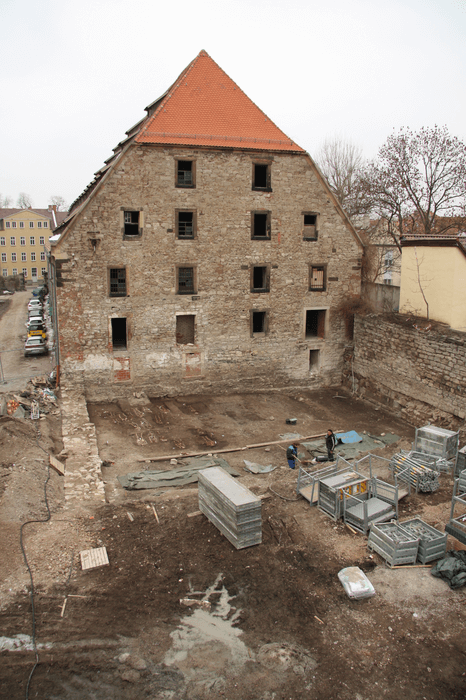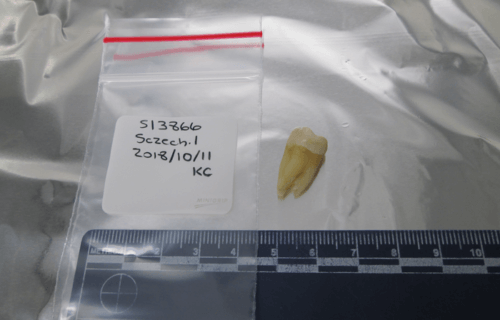JERUSALEM, Israel — The Ashkenazi Jewish community was more diverse 600 years ago than it is today, according to new research. DNA extracted from teeth taken from a Jewish cemetery is providing unprecedented insight into the lives of a once-thriving medieval Ashkenazi community in Erfurt, Germany.
The findings, published in the journal Cell, show that the Erfurt Jewish community was more genetically diverse than present-day Ashkenazi Jews.
“Today, if you compare Ashkenazi Jews from the United States and Israel, they’re very similar genetically, almost like the same population regardless of where they live,” says geneticist and co-corresponding author Shai Carmi from the Hebrew University of Jerusalem in a media release.
Unlike the genetic uniformity scientists typically see today, the new study reveals some surprising revelations about life six centuries ago. Using ancient DNA from 33 Ashkenazi Jews in medieval Erfurt, the researchers discovered that the community appears to have been home to two distinct groups.
One relates more to individuals from Middle Eastern populations. Meanwhile, the other displays a closer link to European populations, possibly migrating to Erfurt from eastern regions.
Although there may have been at least two genetically distinct groups in medieval Erfurt, the team says that variation in ancestral origins no longer exists in modern Ashkenazi Jews.
“Our goal was to fill the gaps in our understanding of Ashkenazi Jewish early history through ancient DNA data,” says Carmi.
Examining ancient Jewish DNA is a rare event
While ancient DNA is a powerful tool scientists use to infer historical demographics, Carmi say ancient Jewish DNA is hard to come by because Jewish law prohibits the disturbance of the dead in most circumstances. However, study authors received the approval of the local Jewish community in Germany and were able to collect detached teeth from remains in a 14th century Jewish cemetery discovered in Erfurt.
The researchers also discovered that the “founder” event – which makes all Ashkenazi Jews today descendants of a small population – happened before this period in time.
Teasing through mitochondrial DNA, the genetic materials humans inherit from their mothers, researchers discovered that one-third of the Erfurt individuals share one specific sequence. The findings indicate that the early Ashkenazi Jewish population was so small that a third of them descended from a single woman through their maternal lines.
Results reveal that at least eight of the Erfurt individuals carried disease-causing genetic mutations common in modern-day Ashkenazi Jews. These mutations are rare in other populations, but a hallmark of the Ashkenazi Jewish founder event.
“Jews in Europe were a religious minority that was socially segregated, and they experienced periodic persecution,” says geneticist and co-corresponding author David Reich of Harvard University.

Jews returned to Erfurt after extreme violence
Although antisemitic violence nearly wiped out Erfurt’s Jewish community in 1349, researchers say Jews returned five years later and grew into one of the largest communities in Germany.
“Our work gives us direct insight into the structure of this community.”
The researchers believe their study establishes an “ethical basis” for future studies of ancient Jewish DNA. However, they add many questions remain unanswered, such as how medieval Ashkenazi Jewish communities became genetically differentiated, how early Ashkenazi Jews related to Sephardi Jews, and how modern Jews relate to ones from ancient Judea.
“This work also provides a template for how a co-analysis of modern and ancient DNA data can shed light on the past,” Reich concludes. “Studies like this hold great promise not only for understanding Jewish history but also that of any population.”
South West News Service writer Stephen Beech contributed to this report.


Asjkenazi Jews are from khazar Khaganate realy.Also see Missing Link of Jews European Ancestry.
https://academic.oup.com/gbe/article/5/1/61/728117
Conclusions:
We compared two European-Jewish ancestry genetic models depicting mixed Khazarian-European-Middle Eastern and some Middle Eastern ancestry. Contemporary populations have been used as surrogates for the ancient Khazars and Judeans, and their relationship to European Jews has been compared through an extensive battery of genetic analyses. Our summary supports the Khazarian hypothesis depicting a large Near Eastern and Caucasus ancestry along with Southern European, Middle Eastern and Eastern European ancestors, commissioned with recent studies and oral and written traditions. We conclude that the genome of European Jews is a tapestry of ancient populations, including Judaized Khazars, Greco-Roman Jews, Mesopotamian Jews.